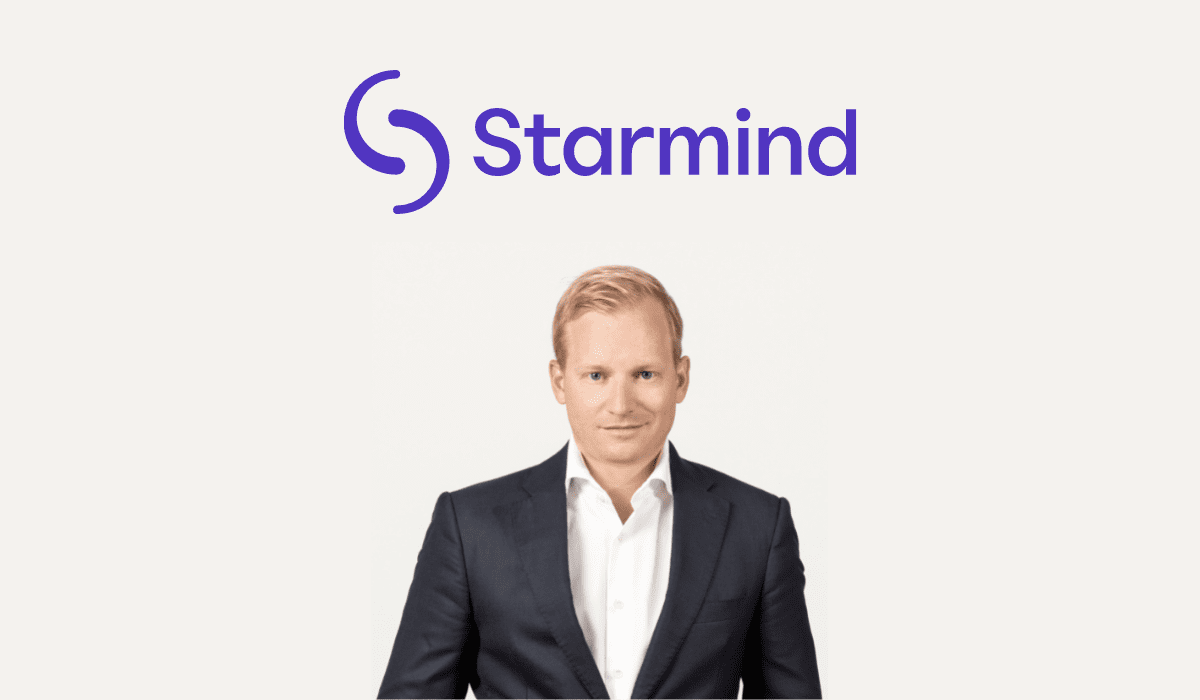Contents
Last week, RobitcBiz had some insightful questions for our newest addition to the Starmind leadership team, Chief Customer Officer (CCO) Ronan Kirby. Keep reading to see what our CCO had to share about his new role, the value of AI for enterprises, and how Starmind is the smartest, fastest, and most intuitive way to connect your employees to enterprise knowledge.
Starmind, a leading AI software company that builds custom knowledge networks within large organizations to surface inaccessible knowledge and connect employees in real-time, recently announced Ronan Kirby as their Chief Customer Officer (CCO).
The former President & General Manager at Kaseya and a seasoned C-Level sales and marketing leader with a history of building, scaling and transforming high-performance, go-to-market organizations in EMEA, Kirby spearheads management and support efforts for large enterprise clients such as Accenture, Bayer, Cognizant, PepsiCo R&D, the United Nations, and other multinational organizations.
We at RoboticsBiz recently had a chance to talk to Ronan Kirby about his new role and understand how Starmind transforms the way employees connect to the expert knowledge they need, eliminates endless searching and documented information overload, boosts productivity, and breaks down silos, unlike the majority of other knowledge management and sharing tools in the market. Mr. Kirby was happy to answer our questions, and you can read the complete interview below:
1. First of all, congratulations on the new role as the chief customer officer at Starmind. It is a big transition from an IT and security management company to AI technology, right? How do you look at it?
Thank you very much. I’m very pleased to have joined such a great company and team.
The way I see it, the transition to an AI technology company isn’t actually a big transition at all.
I have spent most of my career working with complex enterprise technologies. Whether that was at Red Hat, before Linux, Open Source, or even subscription-based software had mainstream awareness or acceptance. Or modernizing applications with cutting-edge microservices architectures at NGINX.
One of the keys to success at both of these companies was a deep understanding of the business value of their respective solutions and the ability to articulate this to the market clearly.
So for me, the transition to Starmind has been about understanding the business impact of the solution, much more than what that solution is based on. Of course, learning the AI back-end is key for me too, but it’s secondary to the business impact we can bring with the solution.
2. Selling AI solutions is perhaps the most challenging task today. Why? Because AI is a complex topic. There is a myriad of terminologies and concepts that even people in the industry can have a difficult time explaining. What is the smart way to sell AI, according to you?
The smart way to sell AI is to not sell AI! Artificial Intelligence is part of the vehicle used to deliver value. It, in its own right, is not the value.
This is a common thing we see in new technologies. It’s helpful to think about the technology adoption lifecycle. First, you have your innovators, then come the early adopters, and if you’re successful in crossing the chasm, you reach mainstream adoption.
We can see this time and time again. What feels like many lifetimes ago now, the innovators and early adopters wanted to use Linux because it was Linux. Slightly less long ago, people wanted to use “cloud” – without even knowing what that meant.
However, the success (mainstream adoption) for these two technologies came when people started to realize their measurable impact and not just want them for the hype.
So I believe the smart way to sell AI is to lead with the measurable impact you can bring to your customer. At Starmind, we clearly understand how to demonstrate the top-line revenue impact we bring to our customers. That we use AI to do this isn’t why people buy it in 2022.
3. What exactly does it mean when you say Starmind is the smartest, fastest, and most intuitive way to connect employees to the expert knowledge they need? Can you share a use case?
One popular use case is supporting R&D organizations in large multinationals. Think about a Consumer Packaged Goods company with multiple foods and beverage brands and, by extension, R&D teams.
Let’s say that one team is trying to develop a new sugar-free drink. How can they know about and leverage similar research that another team has already done? People don’t know what they don’t know. Using Starmind to identify, access, and leverage existing Intellectual Property across teams and silos is materially helping companies get products to market earlier and maintain competitive advantage.
We have customers doing that same thing in the Pharmaceutical & Life Sciences sector.
Another popular use case is how Starmind is used among large consulting companies and global system integrators. These companies typically bid for business through RFP responses. The teams that prepare these responses are usually small local teams from within the region the RFP was received.
Starmind has unlocked the ability to leverage the experience and best practices across these huge global organizations. By identifying and leveraging the experience of a team that bid for and won similar projects in other parts of the world, they can increase their win rate. These contracts are often high eight-digit contracts – so helping increase a company’s success rate has a very measurable business impact.
4. There are plenty of Q&A platforms in the market, and what makes Starmind stand out?
Unlike Starmind, Q&A platforms are extremely limited. Once knowledge is documented, it becomes outdated and stale very quickly. Starmind allows people to verify that information is still current and, indeed, can do the same for identifying experts. Someone who is the expert on a particular subject today may not be the expert next month. Starmind’s ability to unlearn is just like its ability to learn.
This dynamic nature, the relevance of information, and the ability to identify experts in real-time (regardless of what languages they may be speaking) and provide very high response rates in (typically) just an hour or two separates it very clearly from Q&A platforms.



